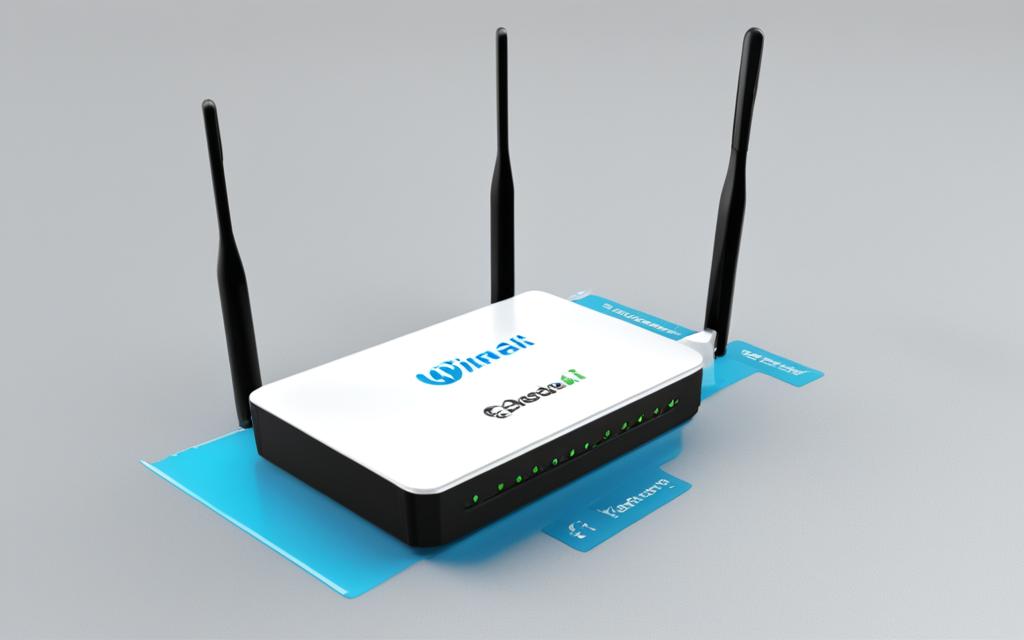Wi-Fi range extenders have become increasingly popular as a solution for improving coverage in local area wireless networks. These devices can enhance the reach and performance of your Wi-Fi network, allowing you to enjoy a seamless internet connection throughout your home or office.
With the proliferation of smart devices and the increasing demand for high-speed internet, it is essential to have a strong and reliable Wi-Fi signal in every corner of your space. Wi-Fi range extenders can help address areas with weak or no Wi-Fi coverage, eliminating dead zones and ensuring a smooth browsing experience.
Consumer Reports’ testing has revealed that while Wi-Fi range extenders can be beneficial in certain situations, they are not a one-size-fits-all solution. Several factors come into play when determining the effectiveness of a Wi-Fi range extender, including your internet connection speed, the distance between the extender and the router, the areas in need of coverage, and the demands of your devices.
It’s important to note that, in some cases, other options like mesh router systems may provide a better solution for improving coverage in your local area wireless network. These systems create a network of interconnected devices that work together to extend and optimize Wi-Fi coverage, albeit at a higher cost.
Ultimately, the choice between a Wi-Fi range extender and a mesh router system depends on your specific needs and budget. In the following sections, we will delve deeper into how Wi-Fi range extenders work, the different types available, important factors to consider when choosing an extender, and offer a conclusion to help you make an informed decision.
How Do Wi-Fi Range Extenders Work?
Wi-Fi range extenders are an essential tool for improving the coverage and performance of local area wireless networks. These devices provide a solution for areas with weak or limited Wi-Fi signals, commonly known as dead zones. So, how do Wi-Fi range extenders work?
Wi-Fi range extenders receive signals from a Wi-Fi router and re-transmit the data to wireless endpoints that may have difficulty exchanging data with the router directly. They act as intermediaries, bridging the gap between the router and devices located outside the router’s range.
One of the primary functionalities of Wi-Fi range extenders is their ability to overcome interference and obstacles caused by physical objects, such as walls and furniture, that can block or weaken the Wi-Fi signal. By picking up the signal from the router and amplifying it, range extenders can improve signal strength in remote parts of a home or office.
To transmit the signal effectively, Wi-Fi range extenders typically have separate receiving and transmitting antennas. This allows them to optimize signal reception and transmission, ensuring a stable connection between the router and devices.
In addition to amplifying the signal, Wi-Fi range extenders also establish a new wireless router specifically to communicate with the wireless endpoints. This new network provides a seamless connection for devices that may have difficulty connecting directly to the original router.
Overall, Wi-Fi range extenders work by receiving and re-transmitting signals, overcoming interference and obstacles, and establishing a new wireless network to improve coverage and connectivity in areas with weak or limited Wi-Fi signals.
Comparison of Wi-Fi Range Extenders
| Wi-Fi Range Extender Model | Features | Price |
|---|---|---|
| Brand A | – Dual-band operation – Ethernet port for wired connections – Easy setup |
$69.99 |
| Brand B | – Tri-band operation – MU-MIMO technology for simultaneous streaming – Mobile app for easy configuration |
$89.99 |
| Brand C | – Plug-and-play design – Compact size for easy placement – LED indicator for signal strength |
$49.99 |
Types of Wi-Fi Extenders
Wi-Fi extenders come in various types, each offering unique features and benefits tailored to specific needs. Understanding the different types can help you make an informed decision when selecting a Wi-Fi extender that suits your requirements.
1. Wireless Wi-Fi Extenders
As the most common type, wireless Wi-Fi extenders are easy to set up and use. They rely on AC power and transmit signals over the air to extend the coverage area of your wireless network. These extenders are versatile and can be placed anywhere within the signal range of your main router, providing flexibility in expanding Wi-Fi coverage.
2. Powerline Adapters
Powerline adapters offer an alternative solution by utilizing the existing electrical wiring in a building to carry network signals. With powerline adapters, you can extend the range of your Wi-Fi network by placing the extender in a location that is farther away from the main router. This type of extender is particularly useful in situations where there are physical obstacles or distance limitations between the router and the desired coverage area.
3. Coaxial Adapters
Coaxial adapters use coaxial cabling to create wired connections between the main router and remote adapters. They provide Wi-Fi coverage in areas that may have weak or no wireless signal. Coaxial adapters are ideal for situations where a reliable wired connection is required, or where the existing coaxial infrastructure is already in place.

| Type | Features |
|---|---|
| Wireless Wi-Fi Extenders | • Easy setup and use • AC powered • Transmit signals over the air |
| Powerline Adapters | • Utilize electrical wiring • Extends network range • Overcome physical obstacles |
| Coaxial Adapters | • Use coaxial cabling • Create wired connections • Provide Wi-Fi coverage |
Additionally, Wi-Fi extenders may come in different form factors, such as desktop or wall-mounted designs, allowing you to choose the best option to fit your aesthetic preferences and placement requirements.
Choosing the right type of Wi-Fi extender depends on your specific needs, the layout of your space, and the challenges you face with your current Wi-Fi coverage.
Factors to Consider When Choosing a Wi-Fi Range Extender
When selecting a Wi-Fi range extender, there are several factors to keep in mind. By considering these factors, you can ensure that you choose the right extender for your specific needs. Let’s take a look at the key factors to consider:
Compatibility with Your Wireless Router
One of the most important factors to consider when choosing a Wi-Fi range extender is its compatibility with your existing wireless router. It is essential to ensure that the extender supports the same Wi-Fi standards as your router. This compatibility ensures seamless communication between the two devices and optimal performance for your extended network.
Multi-band Operation for Improved Performance
To enhance the performance of your Wi-Fi network, look for a range extender that supports multi-band operation. Multi-band extenders offer the advantage of transmitting data simultaneously across different radio bands. This feature reduces network congestion and can significantly improve overall Wi-Fi performance, especially in high-traffic areas.
Consider the Form Factor for Deployment
The form factor of the Wi-Fi range extender is another crucial factor to consider. Depending on your specific requirements and deployment scenario, you can choose between a desktop or wall-mounted extender. If you have limited space, a wall-mounted extender can save valuable surface area. On the other hand, a desktop extender provides flexibility in positioning and allows for easy adjustment if needed.
By carefully considering these factors, you can select a Wi-Fi range extender that meets your specific needs and enhances the coverage and performance of your wireless network.
| Factor | Description |
|---|---|
| Compatibility | Ensure the extender is compatible with your wireless router’s specifications. |
| Multi-band Operation | Select an extender that supports simultaneous data transmission across different radio bands for improved performance. |
| Form Factor | Consider the deployment scenario and choose between desktop and wall-mounted extenders. |
Remember, the right Wi-Fi range extender can effectively extend the coverage of your wireless network and help eliminate dead zones. By taking these factors into account, you can make an informed decision and choose a Wi-Fi range extender that best suits your needs.
Conclusion
Wi-Fi range extenders offer a convenient solution to improve Wi-Fi coverage in local area wireless networks. They can help overcome interference, extend signal reach, and enhance connectivity in remote areas of your home or office. However, it is essential to understand that their effectiveness is influenced by various factors.
While Wi-Fi range extenders can be beneficial in certain situations, they may not always guarantee a complete solution for all Wi-Fi issues. Factors such as internet connection speed, distance from the router, areas in need of coverage, and the demands of your devices can impact their performance.
For more comprehensive coverage, alternative solutions like mesh router systems may be worth considering. Mesh systems provide seamless connectivity by employing multiple access points spread throughout the coverage area. Although they can be more expensive, they offer better performance and a more reliable Wi-Fi experience.
When choosing a Wi-Fi range extender, it is crucial to consider compatibility with your existing wireless router, the extender’s multi-band operation, and the form factor that suits your specific needs. By taking these factors into account, you can ensure optimal performance and enjoy a stable, expanded Wi-Fi network.
FAQ
Are Wi-Fi range extenders a guaranteed solution for all Wi-Fi issues?
No, Wi-Fi range extenders can be useful in certain situations, but their effectiveness is dependent on various factors such as internet connection speed, distance from the router, areas in need of coverage, and the demands of your devices.
What are Wi-Fi range extenders and how do they work?
Wi-Fi range extenders are devices used to increase the effective range of a wireless network. They receive signals from a Wi-Fi router and re-transmit the data to wireless endpoints that may have difficulty exchanging data with the router directly. This helps overcome interference or dead zones caused by physical objects and improves signal strength in remote parts of a home or office.
What types of Wi-Fi extenders are available?
There are different types of Wi-Fi extenders available, including completely wireless extenders that transmit signals over the air, powerline adapters that use electrical wiring to carry network signals, and coaxial adapters that create wired connections to remote adapters to provide Wi-Fi coverage. Different form factors, such as desktop or wall-mounted, are also available.
What factors should I consider when choosing a Wi-Fi range extender?
When selecting a Wi-Fi range extender, it is important to consider compatibility with your wireless router’s specifications, such as the Wi-Fi standards it supports. Multi-band operation, where the extender operates across different radio bands simultaneously, can improve performance. Additionally, the form factor should be considered based on where the extender will be deployed.
Are there alternative solutions to Wi-Fi range extenders?
Yes, mesh router systems may provide better coverage in certain situations. However, they can be more expensive than Wi-Fi range extenders.
Can Wi-Fi range extenders improve coverage in local area wireless networks?
Yes, Wi-Fi range extenders can be a useful tool to improve Wi-Fi coverage in local area wireless networks. However, their effectiveness is dependent on various factors, and considering compatibility, multi-band operation, and form factor can help ensure optimal performance.



















